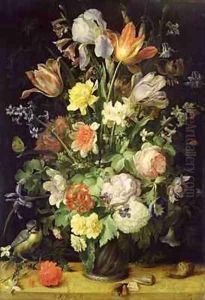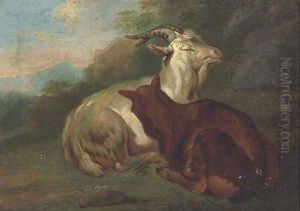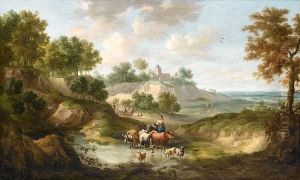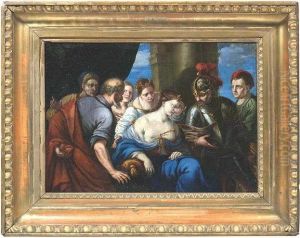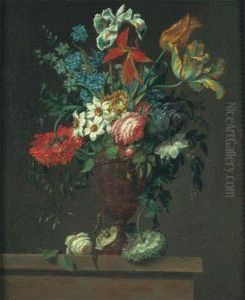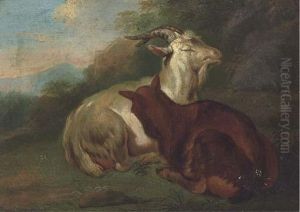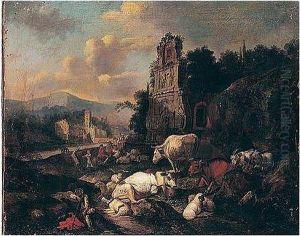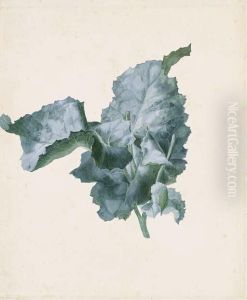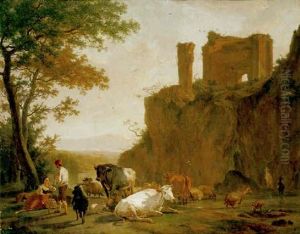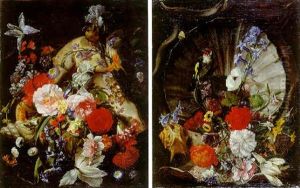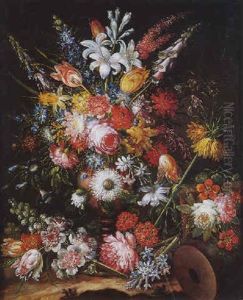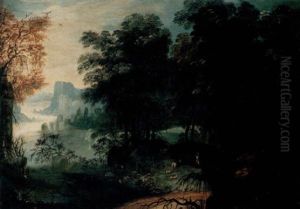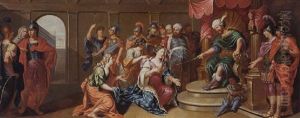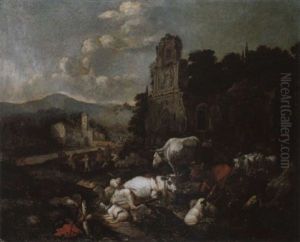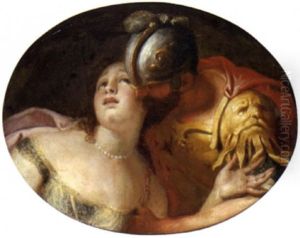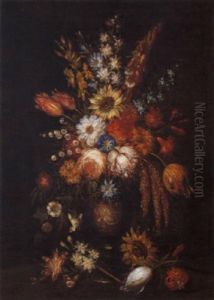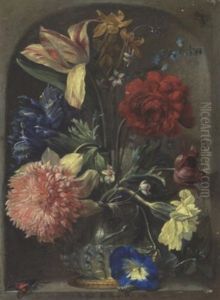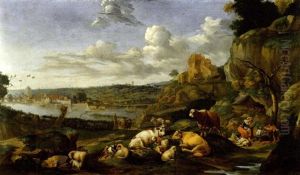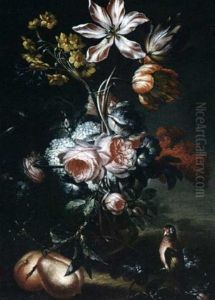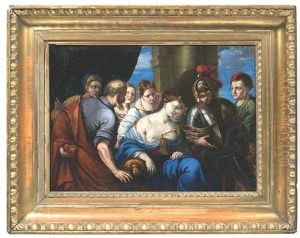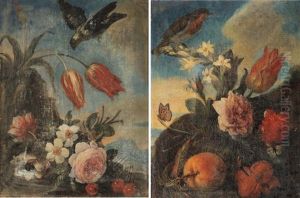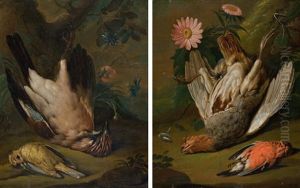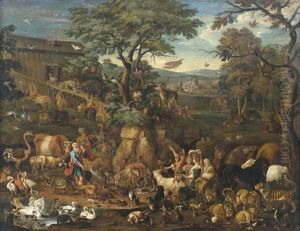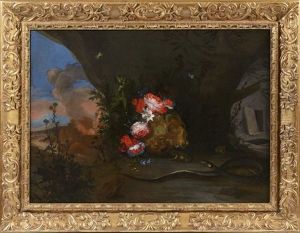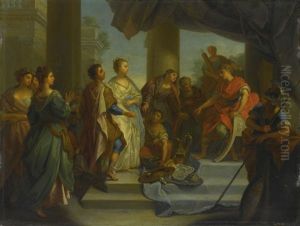Johann Rudolf Byss Paintings
Johann Rudolf Byss was a Swiss painter known for his work during the Baroque period. He was born in 1660 in the city of Schaffhausen, Switzerland. Byss received his early training in painting in his hometown before moving on to further his education and skills abroad.
During his formative years, Byss traveled extensively across Europe, which was common for artists of his time seeking to expand their knowledge and gain exposure to different artistic styles and techniques. He is known to have spent time in Italy, which was a major center for the arts, particularly Rome and Venice, where the influence of the Italian Baroque could be seen in his later works. The Italian Baroque was characterized by its dramatic use of light and shadow, as well as its emotional intensity, which Byss adeptly incorporated into his own style.
On his return to Switzerland, Byss established himself as a prominent painter and was active mainly in the region around Schaffhausen. His body of work includes religious paintings, portraits, and frescoes. One of his notable contributions was his work on the frescoes in the Monastery Church of St. George in Stein am Rhein, which are considered significant examples of Baroque art in Switzerland.
Byss's style is marked by a combination of realistic observation and the Baroque emphasis on dynamism and decoration. His paintings often exhibit a keen attention to detail, vibrant colors, and a masterful handling of light, creating a sense of depth and movement.
Johann Rudolf Byss passed away in 1738, leaving behind a legacy that had a lasting impact on Swiss Baroque painting. His works continue to be studied and admired for their artistic merit and as an expression of the Baroque era in Swiss art history.
